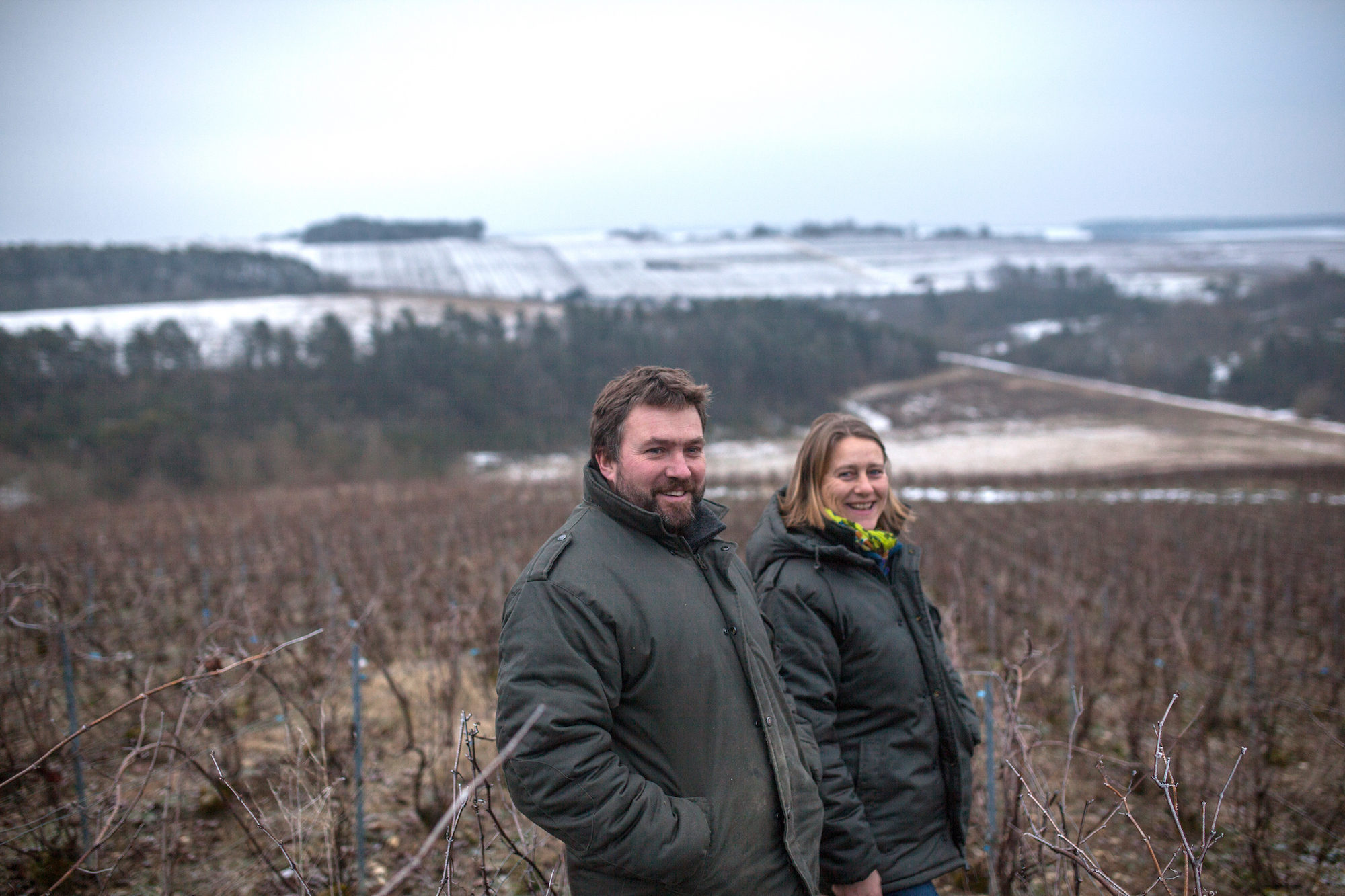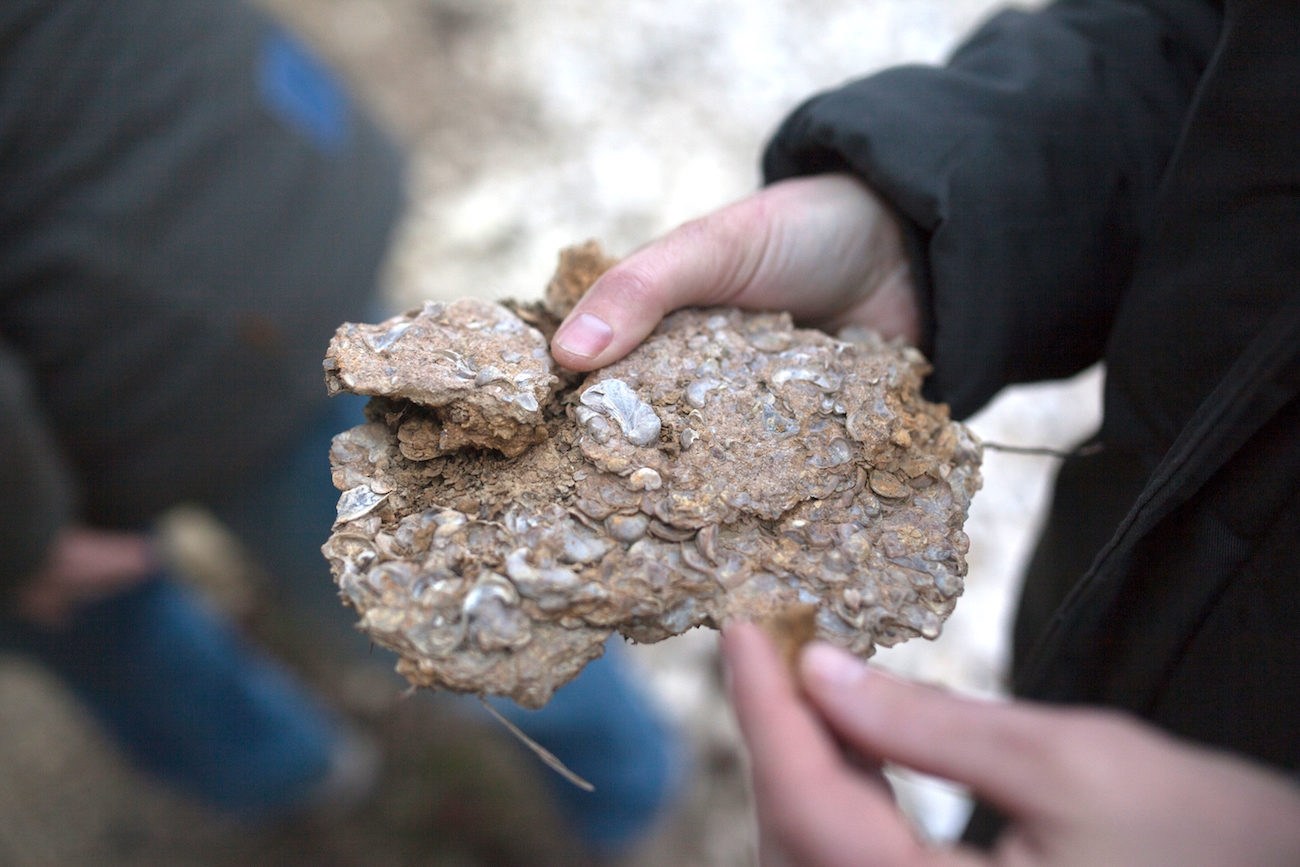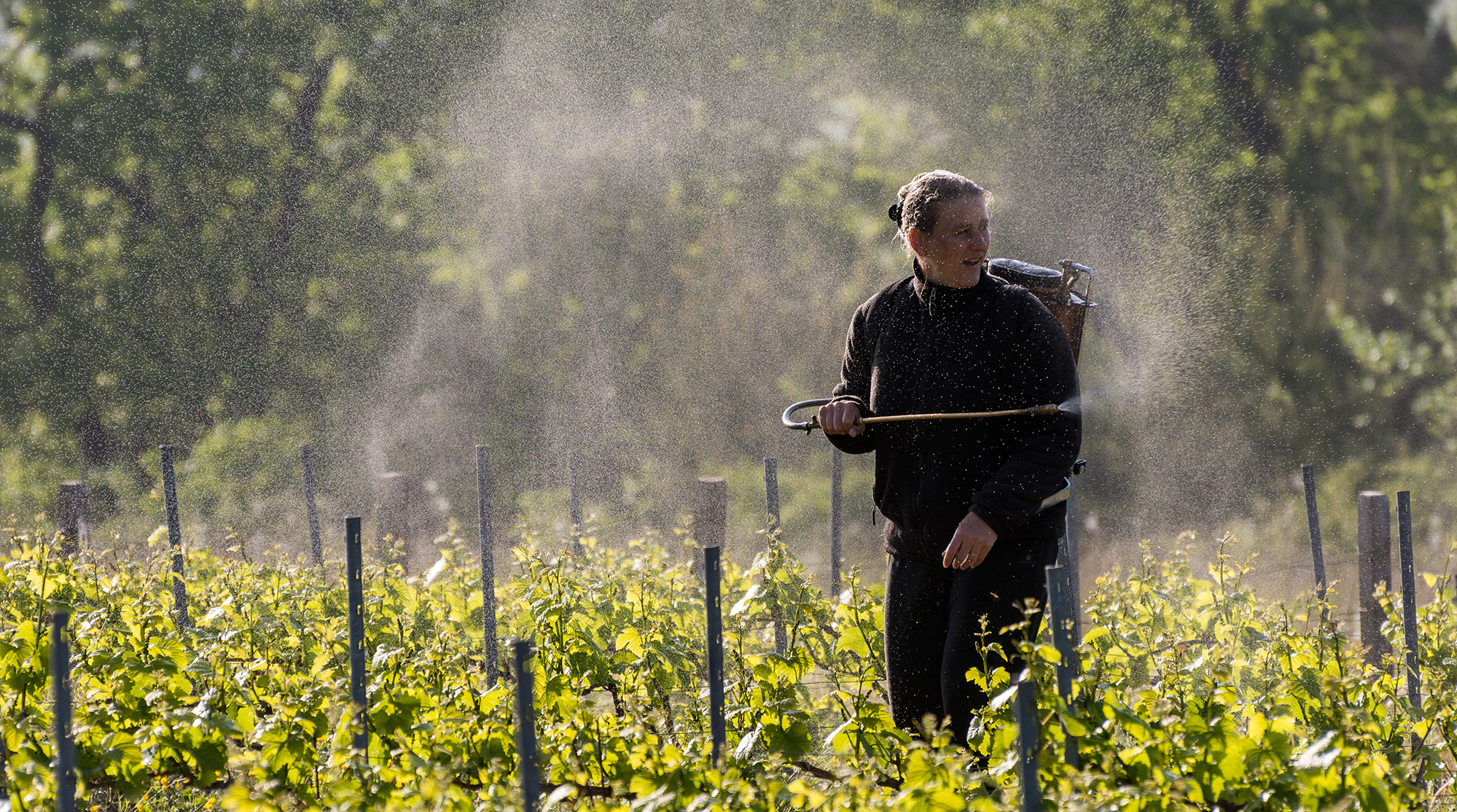Ruppert-Leroy
Champagne / France

At A Glance
Winemaker(s)
Bénédicte and Emmanuel LeroyAppellation
Champagne (Côte des Bar)Varieties
Chardonnay, Pinot NoirFarming
BiodynamicTheir Story
Champagne Ruppert-Leroy is a story of sheep farmers turned vignerons. In 1970 Gérard Ruppert purchased just over a half hectare parcel of chardonnay vines outside the village of Essoyes in the southeastern corner of Aube. This parcel (now the Fosse-Grely vineyard) captured Gérard with its beautiful terroir of Kimmeridgian soils and ideal sun exposure. Enamored by the land and with his passion for organic viticulture, Gérard expanded the parcel planting pinot noir vines using massale selection. Fosse-Grely is Ruppert-Leroy’s only vineyard farmed to both chardonnay and pinot noir. The reputation of Gérard’s vines quickly caught the attention of both small and large buyers as demand for his grapes continued quickly grew.

As Gérard approached retirement and found himself unwilling to sell his land, he convinced his daughter, Bénédicte Leroy, to quit her job and begin working with him. Bénédicte understood her father’s appreciation and love for the natural world and decided to take the family’s farming practice one step further converting the vineyards to certified biodynamic viticulture and completing the cycle as she stopped selling grapes and began bottling their own wine. The first commercial harvest of Ruppert-Leroy was in 2010.
With her husband, Emmanuel Leroy, by her side, the domaine has slowly grown. They now farm four hectares spread across three parcels on south-east facing hills. The largest parcel is the clay dominate 2.13 hectare Fosse-Grely which creates two wines. From Fosse-Grely they bottle the vinyard on its own and as of the 2014 vintage, they are vinifying and bottling Gérard’s original massale selection planting separately calling it “Papillon” as butterflies are prevalent around the vines. The domaine’s other bottlings are single vintage, single vineyard, single parcel wines. These include the 1.32 hectare pinot noir parcel “Les Cognaux” which is a sloped vineyard filled with fossilized sea shells, gray clay, and heavy limestone and the 0.55 hectare chardonnay parcel “Martin Fontaine” which is their steepest vineyard and has the least amount of clay topsoil.
In the cellar, the grapes are lightly pressed and all fermentation occurs in used Burgundy barriques. Only natural yeast is used and primary fermentation is not rushed. Bottling occurs in accordance with the biodynamic calendar in June when the vines are flowering. No dosage is ever added. No sulfur is used at anytime.
Building on their love of biodynamic viticulture, Bénédicte and Emmanuel have built their own ecosystem around the winery. They farm a variety of animals and harvest and dry plants to create their own biodynamic preparations. Bénédicte and Emmanuel, along with their children, live off their own land providing everything they have to their vineyards as their land in return nourishes their family and animals.

Discover More Producers From Champagne
